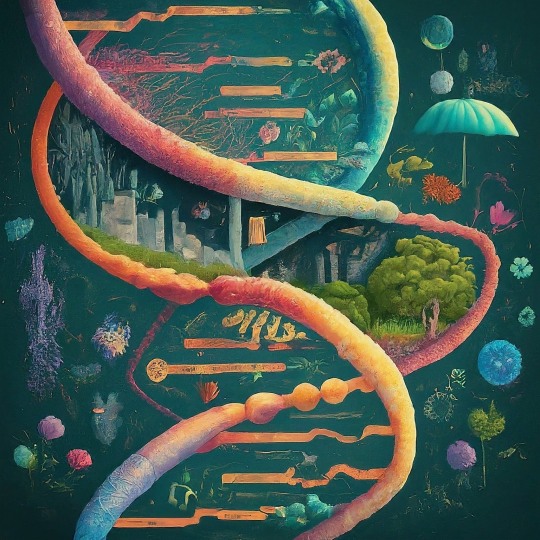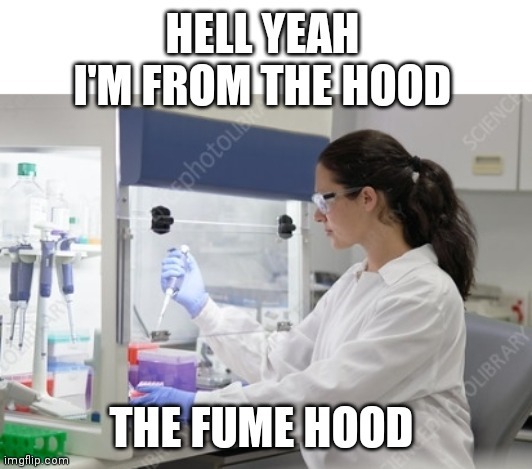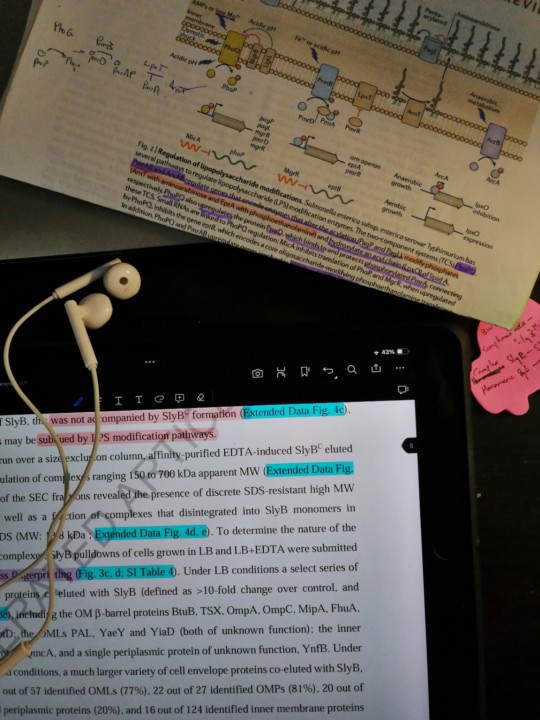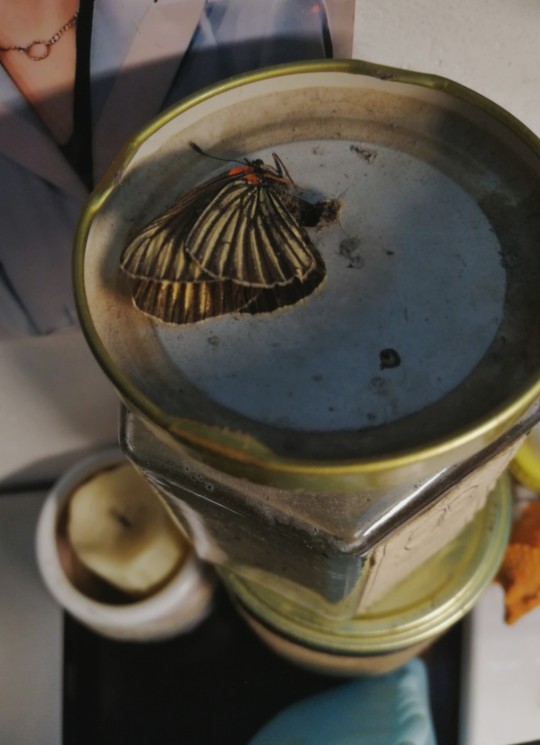#molecular biology
Text

"Evolution is a fact, not a theory. It really happened, and the fossil record and the molecular biology all confirm it. And yet, in this country, the United States, which is the leading scientific country in the world, we have people who are not only ignorant of science, but who are actively hostile to it and to the scientific method. And that is a serious problem, because science is not just a body of knowledge, it's a way of thinking. It's a way o skeptically interrogating the universe with a fine undersanding of human fallibility."
-- Carl Sagan
#Carl Sagan#evolution#theory of evolution#evolution is a fact#science#human fallibility#scientific method#what science is#fossil record#molecular biology#evolution deniers#evolution denial#religion is a mental illness
502 notes
·
View notes
Text
"A company in France has developed genetically-enhanced houseplants that remove 30 times more indoor air pollutants than your normal ficus.
Paint, treated wood, household cleaners, insulation, unseen mold—there is a shopping list of things that can fill the air you breathe in your home with VOCs or volatile organic compounds. These include formaldehyde and other airborne substances that can cause inflammation and irritation in the body.
The best way to tackle this little-discussed private health problem is by keeping good outdoor airflow into your living spaces, but in the dog days of summer or the depths of a Maine winter, that might not be possible.
Houseplants can remove these pollutants from the air, and so the company Neoplants decided to make simple alterations to these species’ genetic makeup to supercharge this cleaning ability.
In particular, houseplants’ natural ability to absorb pollutants like formaldehyde relies on them storing them as toxins to be excreted later.
French scientists and Neoplants’ co-founders Lionel Mora and Patrick Torbey engineered a houseplant to convert them instead to plant matter. They also took aim at the natural microbiome of houseplants to enhance their ability to absorb and process VOCs as well.
The company’s first offering—the Neo P1—is a Devil’s ivy plant that sits on a custom-designed tall stand that both maximizes its air-cleaning properties and allows it to be watered far less often.
Initial testing, conducted by the Ecole Mines-Telecom of Lille University, shows that if you do choose to shell out the $179 for the Neo P1, it’s as if you were buying 30 houseplants. Of course, if you went for the budget route of 30 houseplants, you’d have to water them all.
The founders pointed out in an interview done with Forbes last year that once they settled on the species and fixed the winning genetic phenotype, the next part of the process was just raising plants, the same activity done in every nursery and florist in every town in Europe."
Deliveries for the P1 are estimated for August 2024.
-via Good News Network, November 6, 2023
--
Note: I'm not a plant biologist, but if this works the way the company's white paper says it does, holy genetic engineering, Batman.
(Would love to hear thoughts from anyone who is a plant biologist or other relevant field!)
#plant biology#superplant#pollution#indoor plants#plantblr#house plants#plantlife#hope posting#solarpunk#small business#genetic engineering#genetics#molecular biology#microbiome#respiratory health#france#ivy
554 notes
·
View notes
Text
Ever since the COVID-19 pandemic kicked off, we've been far more aware of our sense of smell.
Now, new research shows that odors – like those emanating from ripening fruits or fermented foods – can lead to changes in how genes are expressed inside cells far beyond the nose.
The findings have scientists wondering if, with much more research, sniffing volatile, airborne compounds could be a way to treat cancer or slow neurodegenerative disease.
Continue Reading.
185 notes
·
View notes
Text
I was in bio the other week and thinking about mitochondria (as you do) and I kept thinking about a heavy metal poster that was mitochondria and like

I did it lol
#u can get this on my Redbubble btw!!#mitochondria#mitochondria is the powerhouse of the cell#biology#bio#microbiology#cells#molecular biology#cell biology
307 notes
·
View notes
Text

Epigenetics: A Journey Through Inheritance Beyond Genes
For centuries, scientists have been fascinated by the mysteries of heredity and how traits are passed down from generation to generation. DNA, the molecule that stores our genetic code, was once thought to be the sole determinant of our characteristics. However, a new frontier in biology, revealing a captivating layer of complexity beyond the DNA sequence itself: Epigenetics.
What is Epigenetics?
The term "epigenetics" was first coined in the 1940s by British biologist Conrad Waddington, but it wasn't until the late 20th century that its significance truly blossomed. Epigenetics, literally meaning "above genetics," refers to the study of heritable changes in gene expression that occur without alterations to the DNA sequence itself. Imagine DNA as the musical score, but epigenetics are the conductor and musicians who determine how the music is played. Through chemical modifications and adjustments to the proteins around DNA, epigenetics dictates which genes are turned on or off, influencing how cells function and ultimately shaping our health, development, and even behavior. Think of your DNA as the hardware: it contains the basic instructions for building and running your body. But epigenetics acts like the software, fine-tuning those instructions and determining which genes get turned on or off at specific times and in specific cells. These modifications, like chemical tags or changes in the packaging of DNA, don't alter the underlying code itself, but they can have a profound impact on how it's read and interpreted.
The Key Players:
DNA methylation: This process involves adding a methyl group to DNA, essentially silencing the gene it's attached to. Imagine it like putting a dimmer switch on a light bulb.
Histone modifications: Histones are proteins that package DNA, and changes in their structure can make genes more or less accessible to the cellular machinery needed for expression. Think of it like adjusting the curtains around a window - open wide for full light, slightly closed for filtered light.
Non-coding RNAs: These are molecules that don't code for proteins but can regulate gene expression in various ways. They're like the backstage crew in a play, ensuring everything runs smoothly.
The Power of Epigenetic Regulation
Epigenetic regulation plays a crucial role in various biological processes, including:
Development: During embryonic development, different cell types emerge from the same DNA blueprint by activating or silencing specific gene sets through epigenetic modifications.
Cellular differentiation: Specialized cells like muscle or nerve cells have unique functions due to differences in their active genes, controlled by epigenetic mechanisms.
Learning and memory: Epigenetic changes in brain cells are thought to be essential for learning and forming memories.
Aging: As we age, our epigenome accumulates changes that can contribute to age-related decline and disease.
Environmental influences: Diet, exercise, stress, and exposure to toxins can leave epigenetic marks on our genes, potentially impacting our health and even the health of future generations.
Epigenetics reminds us that we are not simply products of our genes. Our environment, choices, and experiences leave their mark, shaping who we are and potentially influencing our children's health. This deeper understanding of ourselves opens doors for self-awareness, empowerment, and potentially reshaping our narratives – not just as individuals, but as a species with the potential to leave a healthier legacy for generations to come.
#life science#biology#science sculpt#molecular biology#biotechnology#epigenetics#daily dose of science#dna#genetic inheritance#genetics#decoding dna#genetic code#science#double helix
103 notes
·
View notes
Text
i am but a misfolded protein and every minor inconvenience i encounter is a ubiquitin, bringing me one step closer to the proteosome
87 notes
·
View notes
Text
Biologists are so silly. They found the earliest molecular marker of the cardiac lineage, without which the embryo won't develop its heart, and you know what they named it? Tinman. Like from the Wizard of Oz. Cause he had no heart.
Other examples of this phenomenon include the spätzle gene, so named because a German researcher discovered that if flies are homozygous mutants for the gene (can't express it), they look like noodles when they develop. And spätzle is a German noode.
And don't even get me started on Sonic Hedgehog. Yes, it's named after Sonic the Hedgehog, because homozygous mutants of the gene get spiky. Like a hedgehog. And guess what the inhibitor for the gene is named. Fucking ROBOTNIKININ.
#if anyone who knows any more would like to contribute feel free#biology#molecular biology#genetics#developmental biology#scienceposting
111 notes
·
View notes
Text

Chinwendu Alozie.
Born in America to Nigerian Parents from Imo State.
She plays for the Super Falcons of Nigeria.
A graduate of Molecular Biology from Yale University, Michelle plays for Houston Dash and also works as a part-time cancer research technician at the Texas Children's Hospital Houston.
This is the inspiration your daughter needs and not BBNaija House Mates nor naked celebrities
#chinwendu#chinwendu alozie#african#afrakan#kemetic dreams#africans#afrakans#brown skin#brownskin#fitness#molecular biology#yale uiversity#houston dash#naija#house mates#texas childeren hosptial#nigeria#super falcons#imo state#america#nigerian#football#soccer
168 notes
·
View notes
Text
Does anyone else want to do full genomic sequencing on the Saxons and the people of Camelot and then compare them or is it just me?
I want to know how much the two populations diverged in the unspecified time between "Holder of the GRAIL" and Mordred failing his driving test
Also I'm guessing that the evolutionary rate is ridiculously high among Saxons because of the radiations, but also given the low survival rate, in normal conditions there should be a low genetic diversity because of the bottleneck effect
#the mechanisms#the mechs#hnoc#mordred#hnoc mordred#mordred hnoc#saxons hnoc#molecular biology#dna sequencing#i should go to bed#i dont even know if any of this makes sense scientifically
81 notes
·
View notes
Text

I think most of us know about the story of Katalin Kariko. She is the epitome of how much academia is broken. If she didn't transfer into the industry, we wouldn't see the current progress in mRNA vaccines today
112 notes
·
View notes
Text
Recent efforts in de-extinction have focused on the Tasmanian tiger, as its natural habitat in Tasmania is still mostly preserved, and its reintroduction could help recovering past ecosystem equilibriums lost after its final disappearance. However, reconstructing a functional living Tasmanian tiger not only requires a comprehensive knowledge of its genome (DNA) but also of tissue-specific gene expression dynamics and how gene regulation worked, which are only attainable by studying its transcriptome (RNA).
"Resurrecting the Tasmanian tiger or the wooly mammoth is not a trivial task, and will require a deep knowledge of both the genome and transcriptome regulation of such renowned species, something that only now is starting to be revealed," says Emilio Mármol, the lead author of a study recently published in the Genome Research journal by researchers at SciLifeLab in collaboration with the Centre for Paleogenetics, a joint venture between the Swedish Museum of Natural History and Stockholm University.
86 notes
·
View notes
Text
Anita Roberts

Molecular biologist Anita Roberts was born in 1942 in Pittsburgh, Pennsylvania. Roberts' research focused on TGF-Beta, which plays an important role in both cancer and wound healing, and her work has helped form the basis for new breast cancer treatment approaches. She was among the top 50 most cited biological scientists in the world, and one of the first women to become a laboratory chief at the National Institutes of Health.
Anita Roberts died in 2006 at the age of 64.
Image: Bill Branson, National Cancer Institute
236 notes
·
View notes
Text

#memecular biology#science side of tumblr#science stuff#lab life#fume hood#bio lab#scientist#science memes#lab meme#lab memes#science meme#haley meming#meming from the lab#biologist#molecular biology#bio memes#biotech#biology#biotechnology#mol bio#biochem humor#bio humor#memes#nerd culture#nerdy jokes#nerdiness#nerdy#nerd memes#nerd meme#nerd humor
271 notes
·
View notes
Text
The Janus kinase 2 (JAK2) protein mediates signaling from several cytokine receptors in the regulation of hematopoiesis and immune responses. Somatic mutations in human JAK2 lead to constitutive activation and cytokine-independent signaling and underlie several hematological malignancies from myeloproliferative neoplasms (MPN) to acute leukemia and lymphomas. JAK2 contains an active kinase domain and an inactive pseudokinase domain. Interestingly, pathogenic mutations mainly occur in the regulatory pseudokinase domain.
Due to its critical pathogenic role, JAK2 has become an important therapeutic target. The four currently approved JAK2 inhibitors relieve symptoms but do not heal the patient or affect survival. These drugs target the highly conserved kinase domain and affect both normal and mutated JAK2 and, due to side effects, carry a black box warning that limits their use in elderly, cardiac and cancer patients. The selective inhibition of pathogenic JAK2 is a key pending goal in drug discovery that requires a precise mechanistic understanding of the regulation of JAK2 activation.
Continue Reading.
55 notes
·
View notes
Text




finally getting some readings for my thesis out of the way ! (along with the recreational ones)
#studyblr#studyspo#my post#original post#study motivation#entomology#dark academia#study aesthetic#studying#study blog#currently reading#stem studyblr#stemblr#biology student#biology major#molecular biology#chaotic academia
46 notes
·
View notes
Text
Exploring the Marvels of Biological Macromolecules: The Molecular Machinery of Life (Part 3)
Proteins and Enzymes: Catalysts of Molecular Reactions
Proteins are the central players in macromolecular interactions. Enzymes, a specialized class of proteins, catalyze biochemical reactions with remarkable specificity. They bind to substrates, facilitate reactions, and release products, ensuring that cellular processes occur with precision.
Protein-Protein Interactions: Orchestrating Cellular Functions
Proteins often interact with other proteins to form dynamic complexes. These interactions are pivotal in processes such as signal transduction, where cascades of protein-protein interactions transmit signals within cells, regulating diverse functions such as growth, metabolism, and immune responses.
Protein-Ligand Interactions: Molecular Recognition
Proteins can also interact with small molecules called ligands. Receptor proteins, for instance, bind to ligands such as hormones, neurotransmitters, or drugs, initiating cellular responses. These interactions rely on specific binding sites and molecular recognition.
Protein-DNA Interactions: Controlling Genetic Information
Transcription factors, a class of proteins, interact with DNA to regulate gene expression. They bind to specific DNA sequences, promoting or inhibiting transcription, thereby controlling RNA and protein synthesis.
Membrane Proteins: Regulating Cellular Transport
Integral membrane proteins participate in macromolecular interactions by regulating the transport of ions and molecules across cell membranes. Transport proteins, ion channels, and pumps interact precisely to maintain cellular homeostasis.
Cooperativity and Allosteric Regulation: Fine-Tuning Cellular Processes
Cooperativity and allosteric regulation are mechanisms that modulate protein function. In cooperativity, binding one ligand to a protein influences the binding of subsequent ligands, often amplifying the response. Allosteric regulation occurs when a molecule binds to a site other than the active site, altering the protein's conformation and activity.
Interactions in Signaling Pathways: Cellular Communication
Signal transduction pathways rely on cascades of macromolecular interactions to transmit extracellular signals into cellular responses. Kinases and phosphatases, enzymes that add or remove phosphate groups, play pivotal roles in these pathways.
Protein Folding and Misfolding: Disease Implications
Proteins must fold into specific three-dimensional shapes to function correctly. Misfolded proteins can lead to Alzheimer's, Parkinson's, and prion diseases. Chaperone proteins assist in proper protein folding and prevent aggregation.
References
Voet, D., Voet, J. G., & Pratt, C. W. (2016). Fundamentals of Biochemistry: Life at the Molecular Level. Wiley.
Lehninger, A. L., Nelson, D. L., & Cox, M. M. (2017). Lehninger Principles of Biochemistry. W. H. Freeman.
Berg, J. M., Tymoczko, J. L., & Stryer, L. (2002). Biochemistry. W. H. Freeman

#science#college#biology#education#school#medicine#student#doctors#health#healthcare#proteins#molecular biology#molecular structure#chemestry#chemistry
96 notes
·
View notes